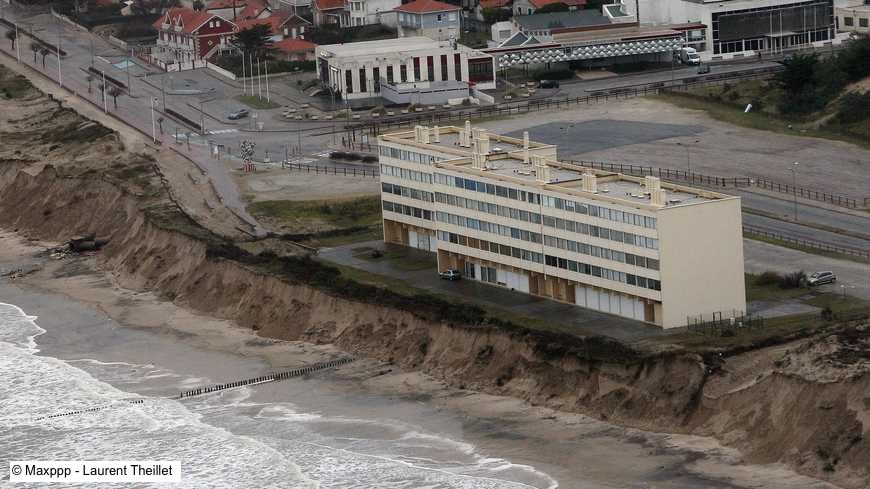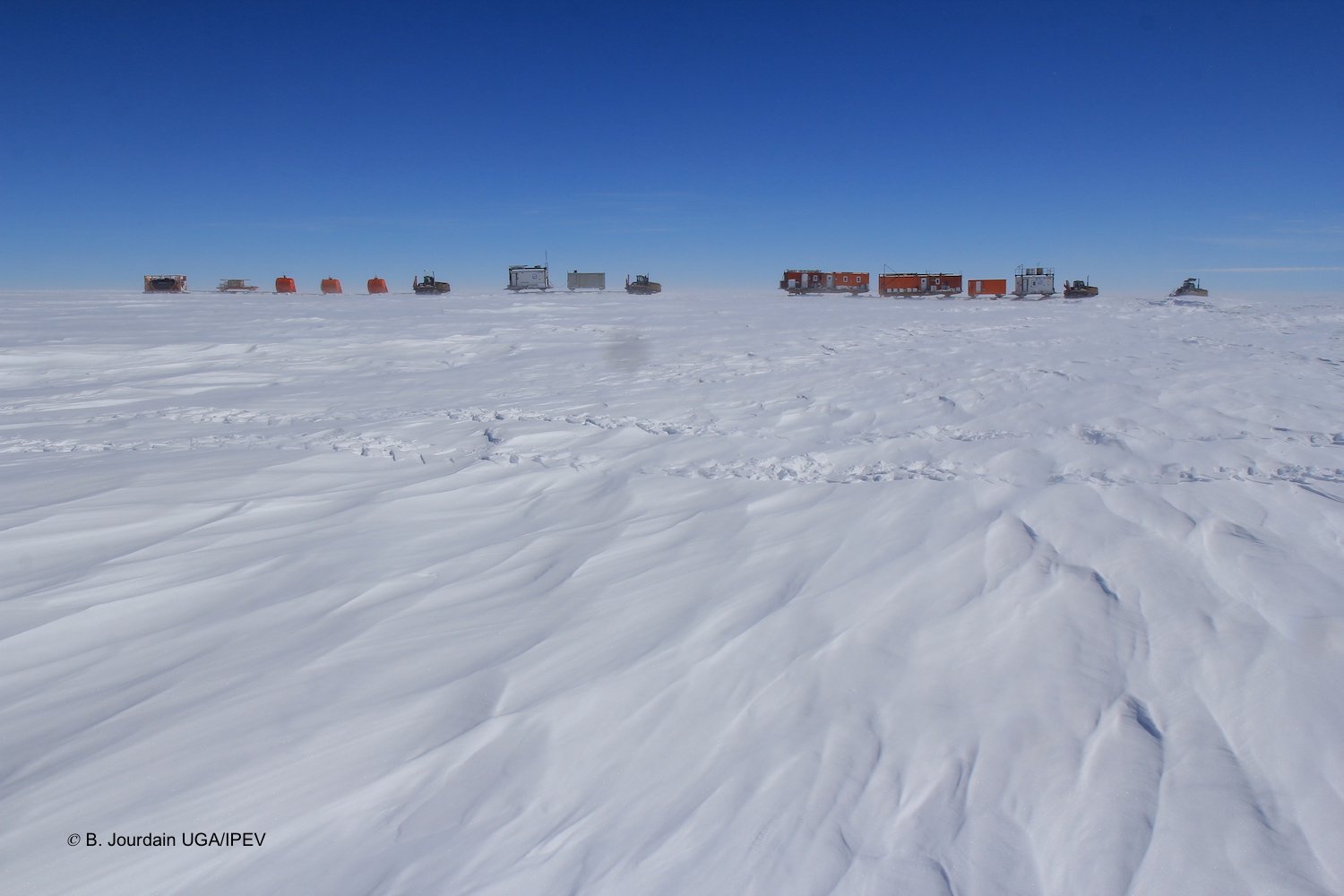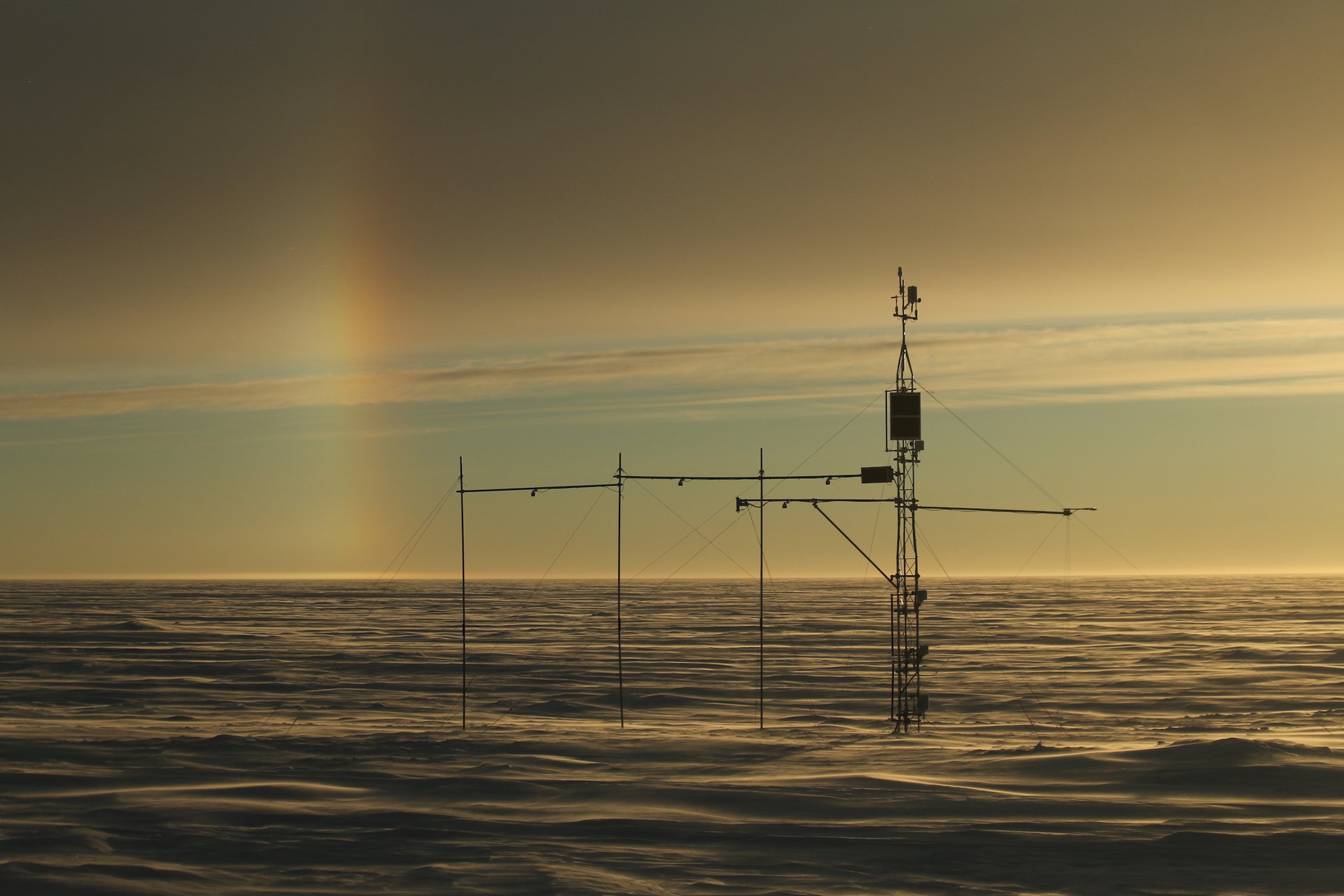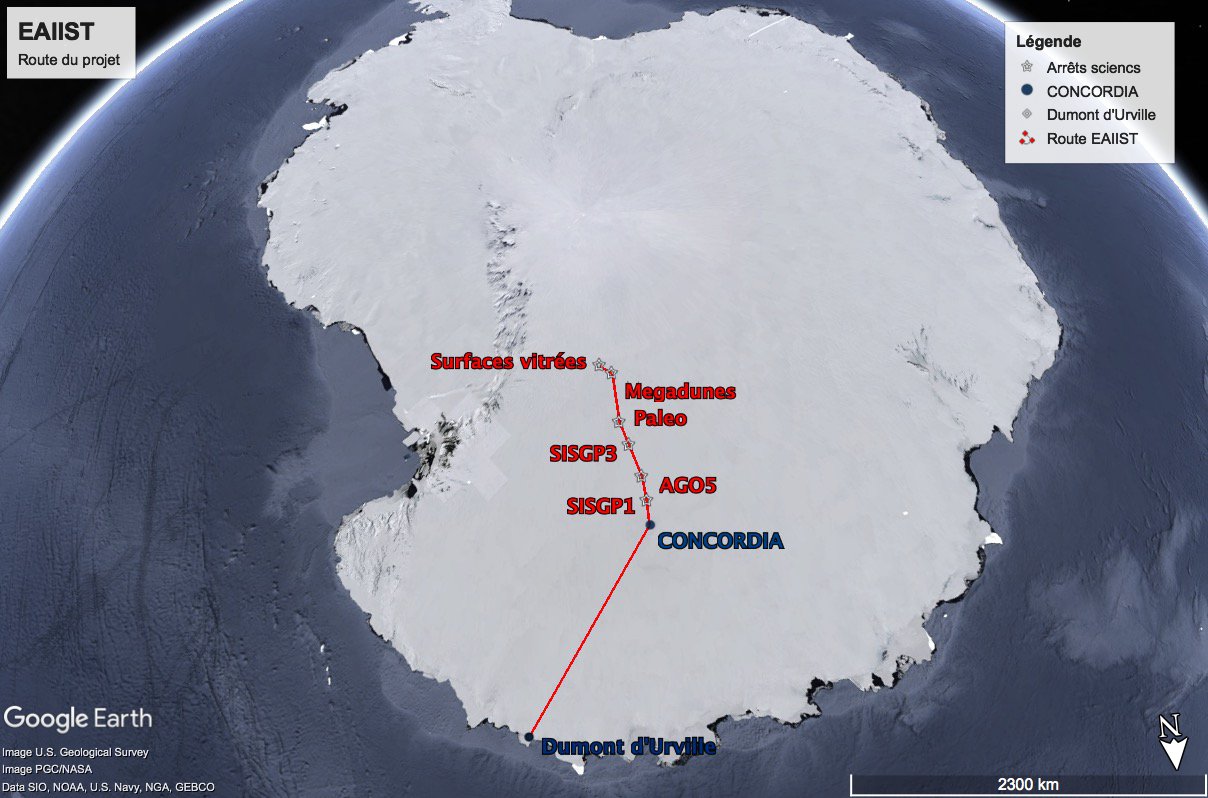fulfilled mission
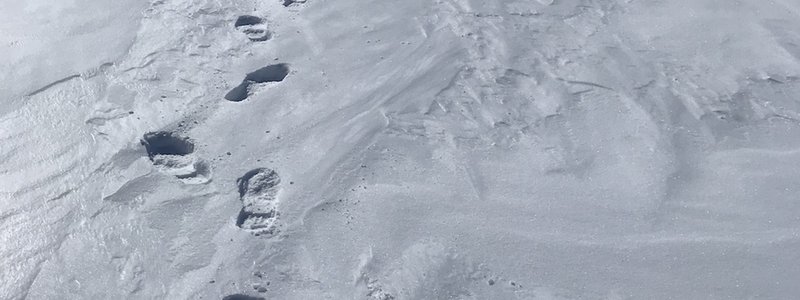
Rising sea levels threaten port infrastructure, coastal cities and landscapes, tourism, heritage, ecosystems and of course people living near the coast. Predicting the rates of sea-level change remains a major challenge for our societies.
However, it is at the poles, far from our eyes, that the future of sea level is determined. We must therefore go and see and understand how the polar ice caps react to climate change.
It allows progression on the Antarctic plateau, in autonomy and at polar temperatures down to -50°C.
Weather surveys, snow sampling, ice core drilling, physical snow measurements, seismology and radar measurements are planned to measure snow accumulation and see if the plateau is gaining mass.
The expedition will travel between the Franco-Italian Concordia station and the South Pole, a region where there are exceptional morphological structures such as the megadunes that can be seen here from an aircraft.
Five study areas are planned where the caravan will be stationed for several days to allow the installation of scientific equipment that will remain on site in energy autonomy and collect data for as long as they can. Snow samples will be collected along the entire length of the route.
The progress can be monitored on a daily basis between 10 November 2019 and 4 February 2020 via a logbook, social networks and on this website
